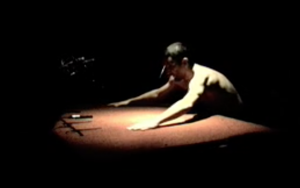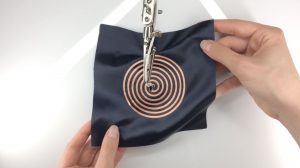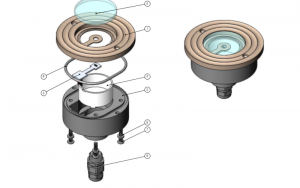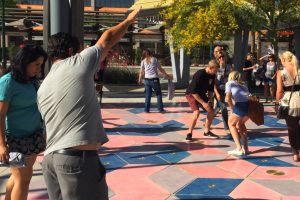In this week’s Looking Outwards post, I’d like to focus on two examples of sound art and computational music, mainly focusing on a specific artist first (whose project fits into the sound art option more than the computational music option). This artist is named Cevdet Erik, a Turkish artist and musician.
A particular work of his, SSS – Shore Scene Soundtrack / SSS – Sahil Sahnesi Sesi, is a sound installation in which the participant moves and slides their hands along a carpet in massage-like movements which cause the sound of the ocean to play. Typically putting his works in site-specific locations, Erik uses his knowledge from his studies of architecture and sound design and explores themes such as rhythm, time, and space in his work.

What I really love about this sound installation is that it is based on user experience. Sound doesn’t just happen to you—you’re the source. I find that this project of Erik’s helps people feel more in touch with their bodies as fluid organisms rather than something that just helps them get around.
Lastly, I wanted to mention that I found out about this Artificial Intelligence named Aiva that was created to compose soundtracks for films, video games, tv shows, and commercials. Aiva was taught to compose classical music specifically. It was fascinating to many that the pieces created were still emotionally touching, and surprised audiences that an entity that is not human is capable of doing so: https://newatlas.com/creative-artificial-intelligence-computer-algorithmic-music/35764/
![[OLD FALL 2017] 15-104 • Introduction to Computing for Creative Practice](../../../../wp-content/uploads/2020/08/stop-banner.png)

 Houdini1
Houdini1 Houdini 2
Houdini 2 




